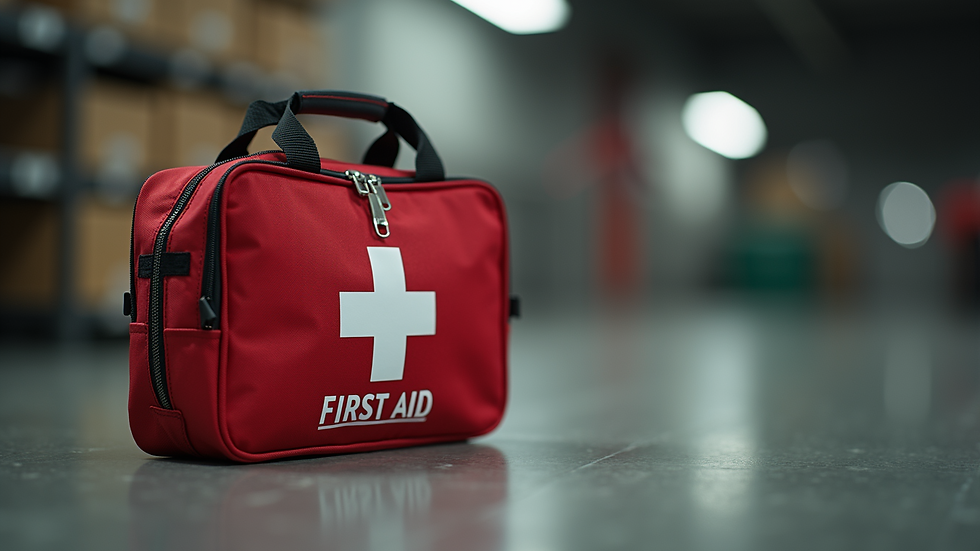Understanding Neonatal Resuscitation: Key Steps in Emergency Care
- kisercpr
- May 26, 2025
- 3 min read
Neonatal resuscitation is a critical aspect of neonatal care, especially in emergency situations. When a baby is born, they may need assistance to start breathing or to stabilize their heart rate. Immediate and effective response in these moments can save lives. This blog post will guide you through essential steps in neonatal resuscitation, the importance of training, and how to become certified in these life-saving techniques.
The Importance of Neonatal Resuscitation
Neonatal resuscitation is necessary to manage conditions such as asphyxia, prematurity, and congenital anomalies. According to the World Health Organization, around 2.4 million newborns die each year, and many more face immediate health challenges at birth. Effective neonatal resuscitation can significantly reduce these numbers.
In every birthing unit, healthcare providers must be prepared for emergencies. This includes knowing the steps to take and having access to the right equipment. Quick and accurate action during the first few minutes of life is crucial.

Key Steps in Neonatal Resuscitation
When responding to a baby in need, certain steps must be rigorously followed:
Initial Assessment:
Immediately after delivery, healthcare providers should assess the newborn’s condition. Look for signs of breathing, heart rate, and skin color.
A heart rate below 100 beats per minute or failure to breathe properly indicates the need for resuscitation.
Positioning:
Position the newborn on a flat surface and clear the airway if necessary. This may involve gentle suction to remove any fluid in the mouth or nose.
Stimulation:
If the baby is not breathing, gentle stimulation can sometimes encourage spontaneous breathing. This can include rubbing the baby’s back or flicking the soles of their feet.
Ventilation:
If the newborn does not respond to stimulation, it is essential to provide positive pressure ventilation. A bag-mask device should be used to deliver air into the lungs effectively.
Make sure to watch for chest rise as an indicator of successful ventilation.
Chest Compressions:
If the heart rate remains below 60 beats per minute, chest compressions might be necessary. This is usually performed in conjunction with ventilation. The "two thumb" technique is often preferred for its effectiveness.

Medications:
In some cases, medications such as epinephrine may be needed. This should only be administered when the other methods are ineffective.
Monitoring and Support:
Continuous monitoring of the baby's heart rate, oxygen saturation, and temperature is vital. Keeping the baby warm through thermoregulation can help stabilize their condition further.
These steps are not just recommendations—they are life-saving techniques that can dramatically improve health outcomes for newborns in distress.
How to get NRP certified?
Becoming certified in neonatal resuscitation is essential for healthcare providers working in maternal and child health care settings. To get certified, follow these steps:
Enroll in a Course:
Look for an accredited course that offers training in the neonatal resuscitation program (NRP). Many organizations, including hospitals and professional training institutes, conduct these courses.
Complete the Online Module:
Before attending hands-on training sessions, most programs require participants to complete an online module. Be sure to read the guidelines and familiarize yourself with the materials.
Attend a Hands-On Workshop:
Engaging in a practical workshop is crucial. Here, you will practice resuscitation techniques with trainers and assess equipment use.
Take the Exam:
Successfully passing the certification exam is the final step. This exam typically tests your knowledge of the clinical guidelines and procedures from the course.
Recertification:
Stay current by renewing your certification periodically. Many organizations recommend recertification every two years to keep skills sharp and stay updated with new practices.

Key Takeaways
Neonatal resuscitation is an essential skill that every healthcare provider should master. The immediate response during a newborn's critical moments can mean the difference between life and death. Being prepared involves understanding the key steps of resuscitation, such as assessment, ventilation, and monitoring.
In addition to knowing the techniques, it's just as important to stay certified through a reputable program. Gaining practical experience and knowledge keeps you equipped to handle emergencies effectively.
By participating in a neonatal resuscitation program, healthcare professionals can ensure they deliver the fastest and most effective care. This ongoing education ultimately enhances outcomes for newborns in critical situations.
Understanding the importance of these procedures reinforces the duty healthcare providers have in safeguarding newborn lives. Emergency preparedness in neonatal care must not be overlooked.
Through awareness and training, we can collectively improve the future for countless newborns. Ensuring that every healthcare setting is equipped with trained professionals can create a ripple effect of positive change. Making neonatal health a priority will pave the way for healthier beginnings for our next generation.

.png)



Comments